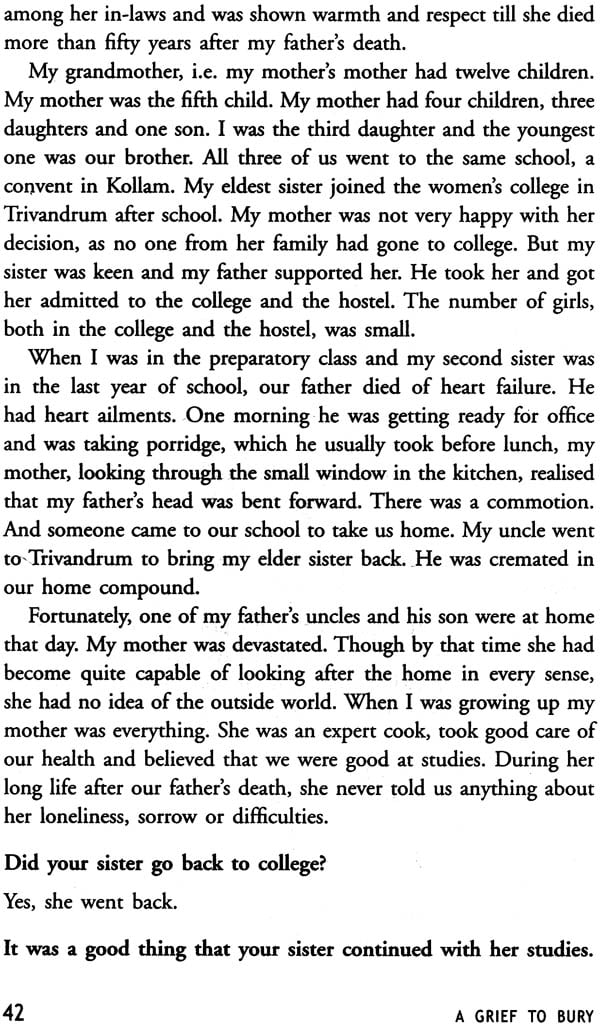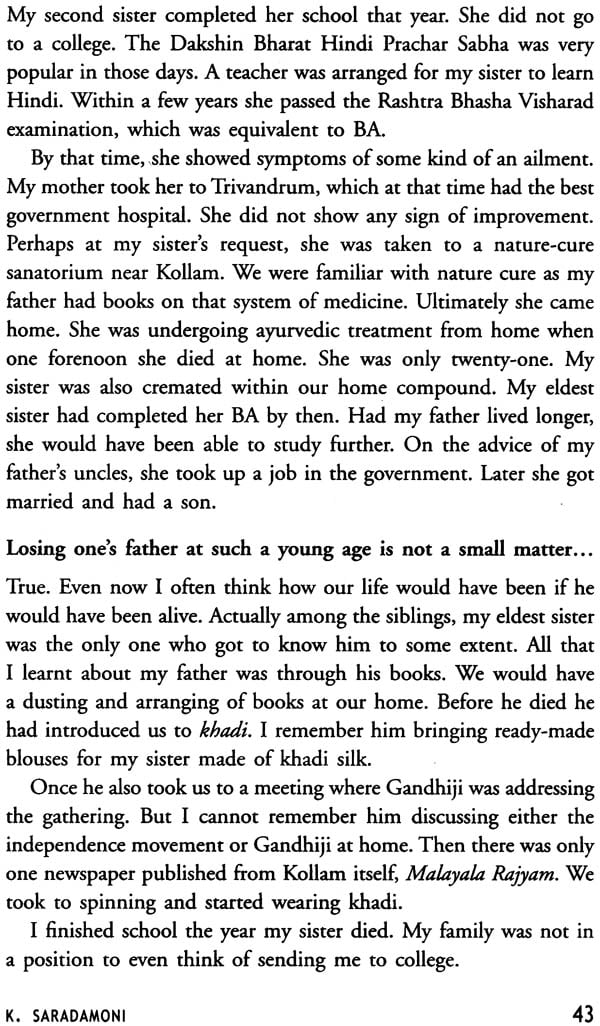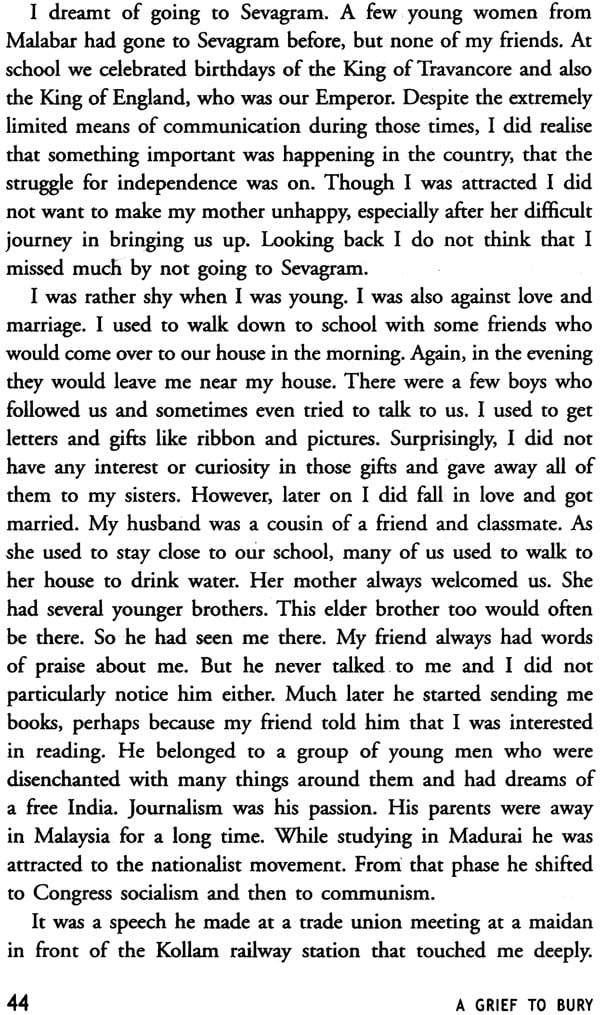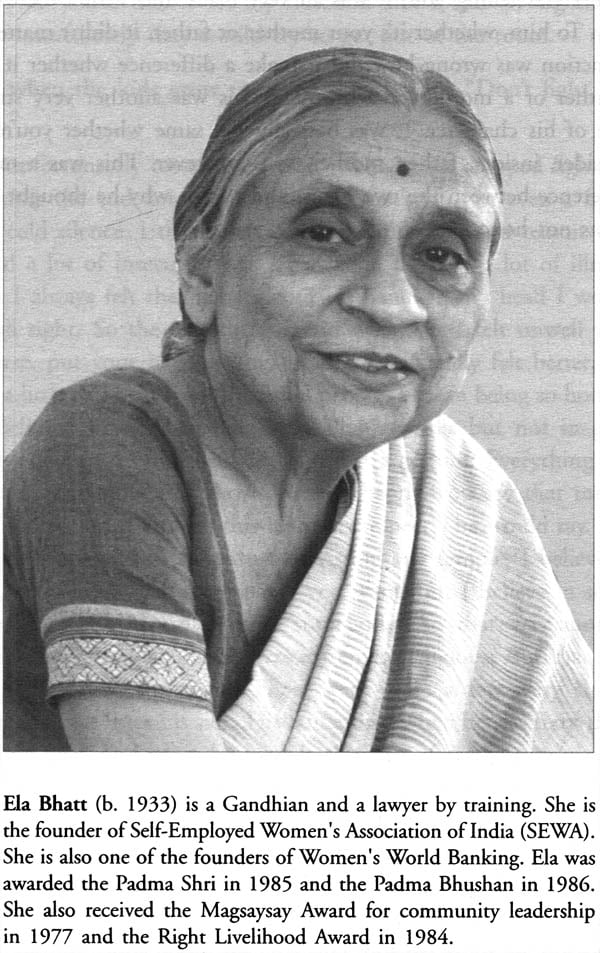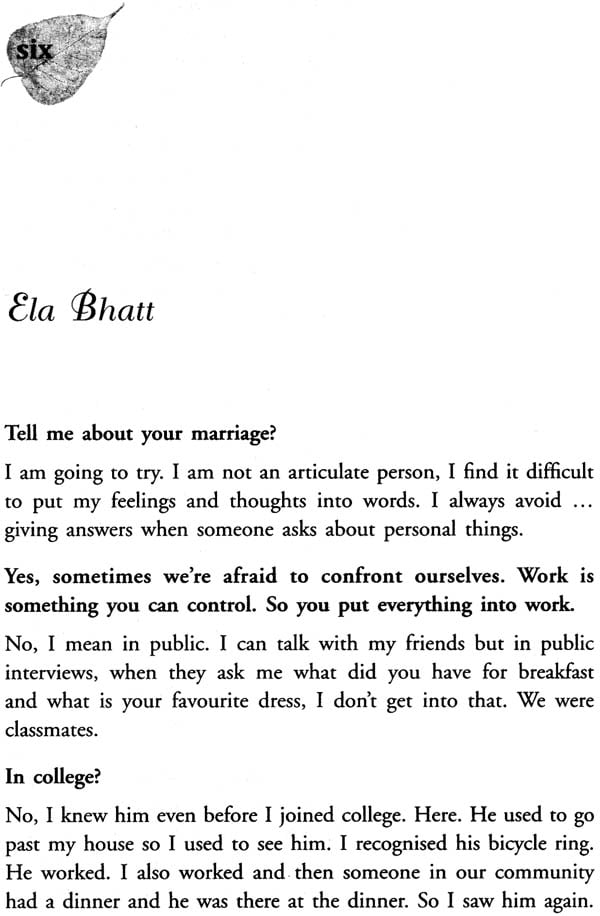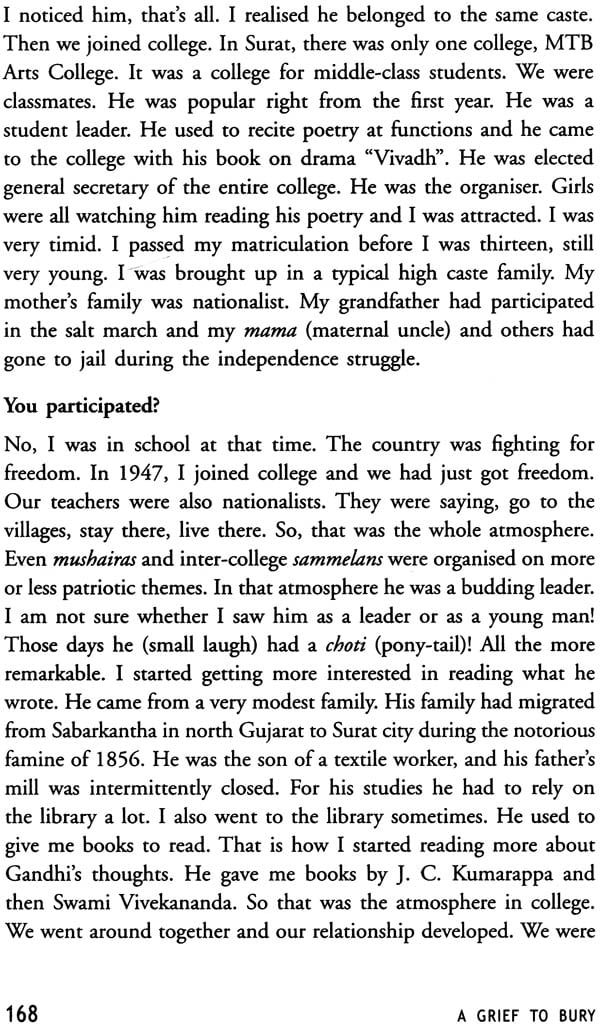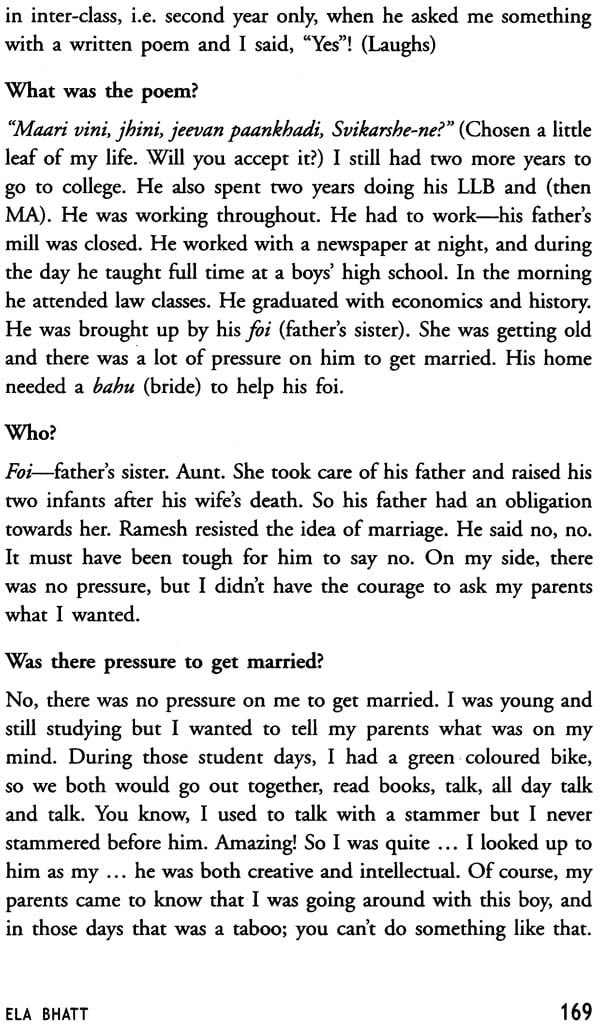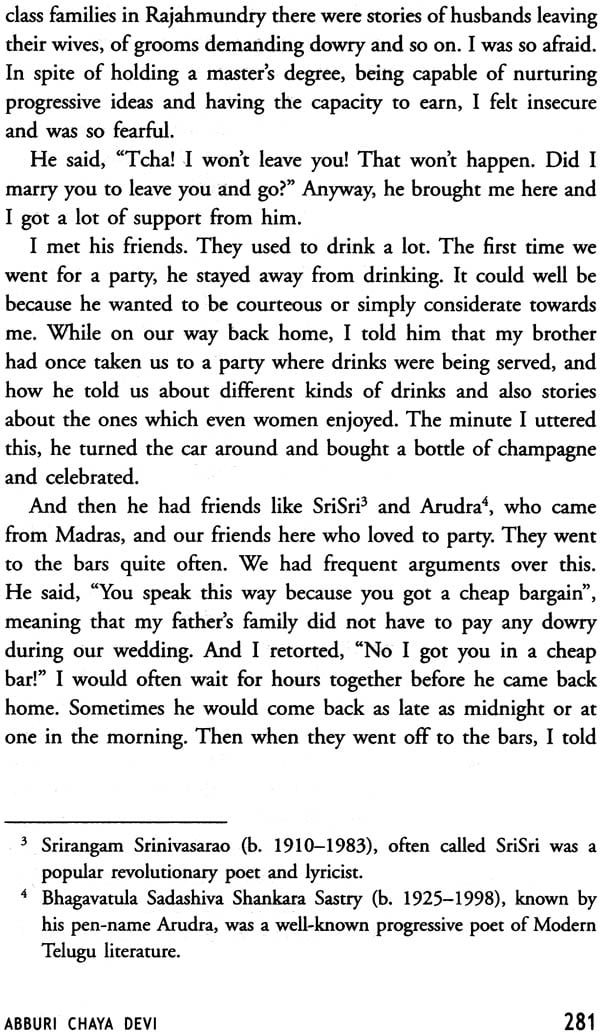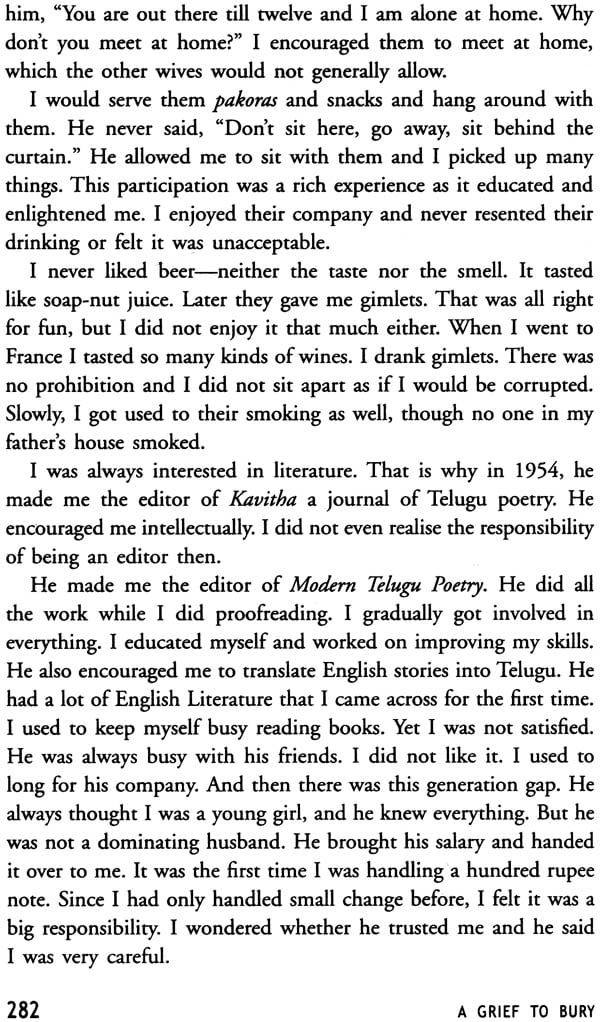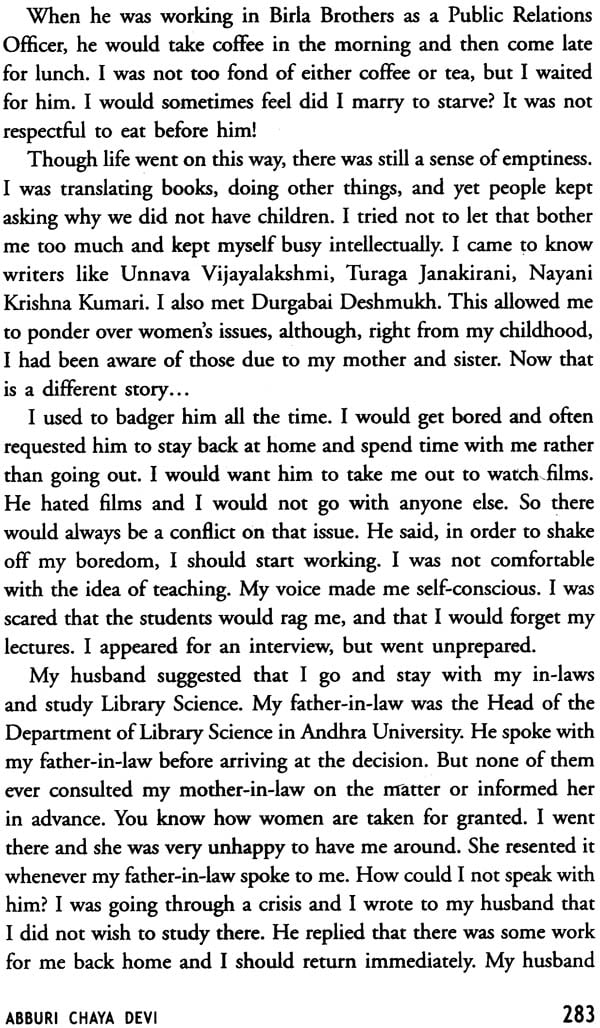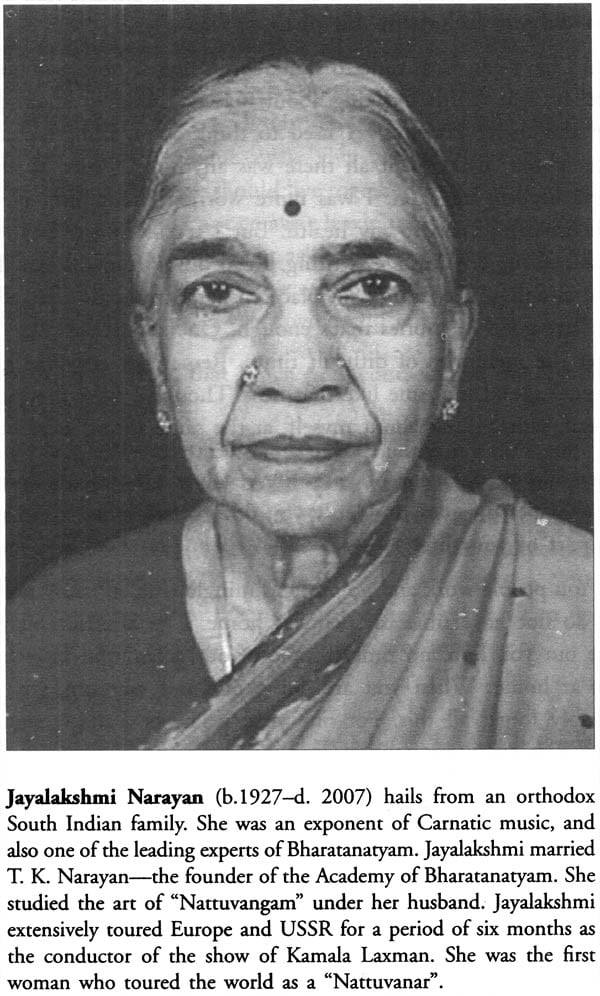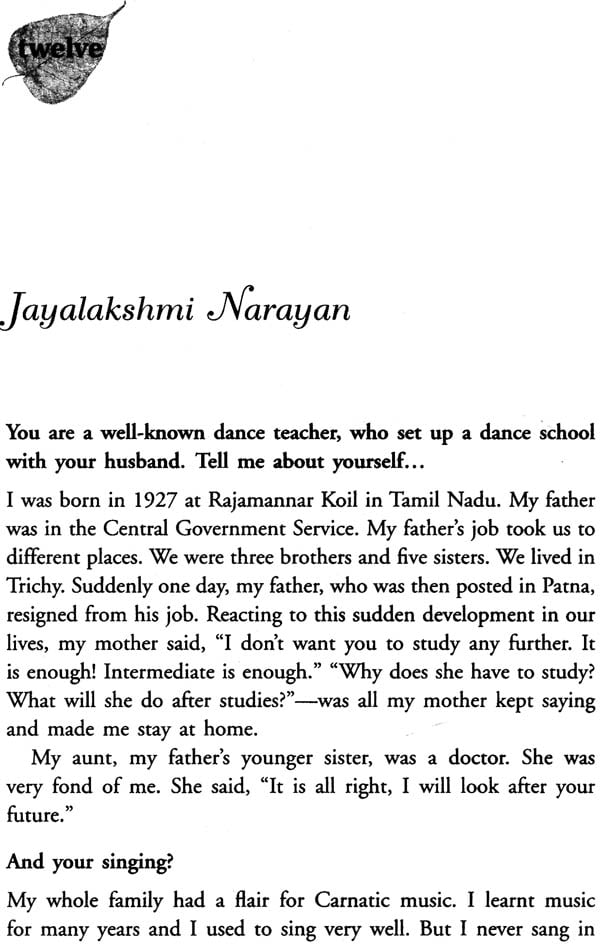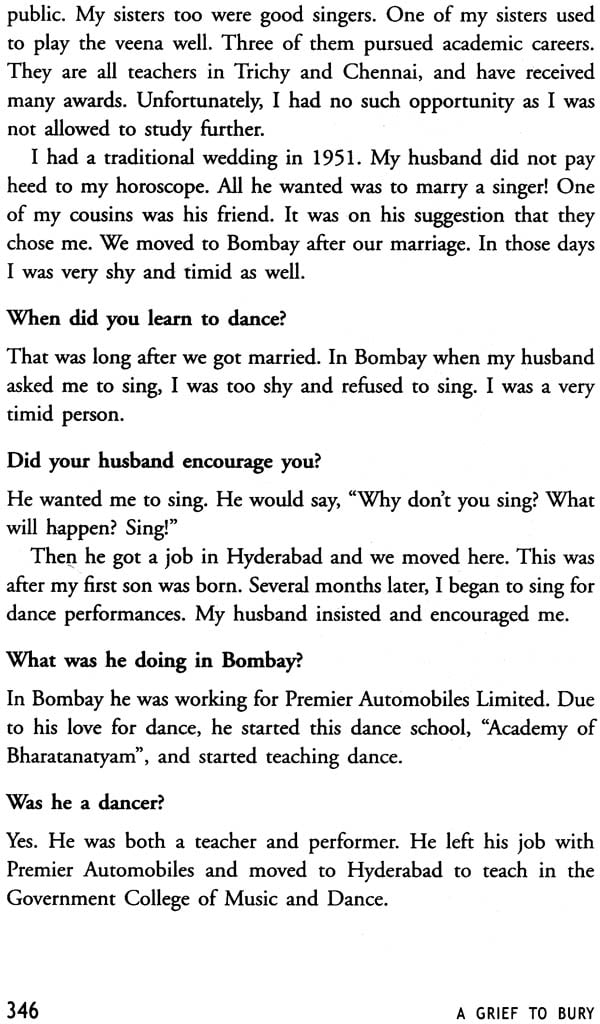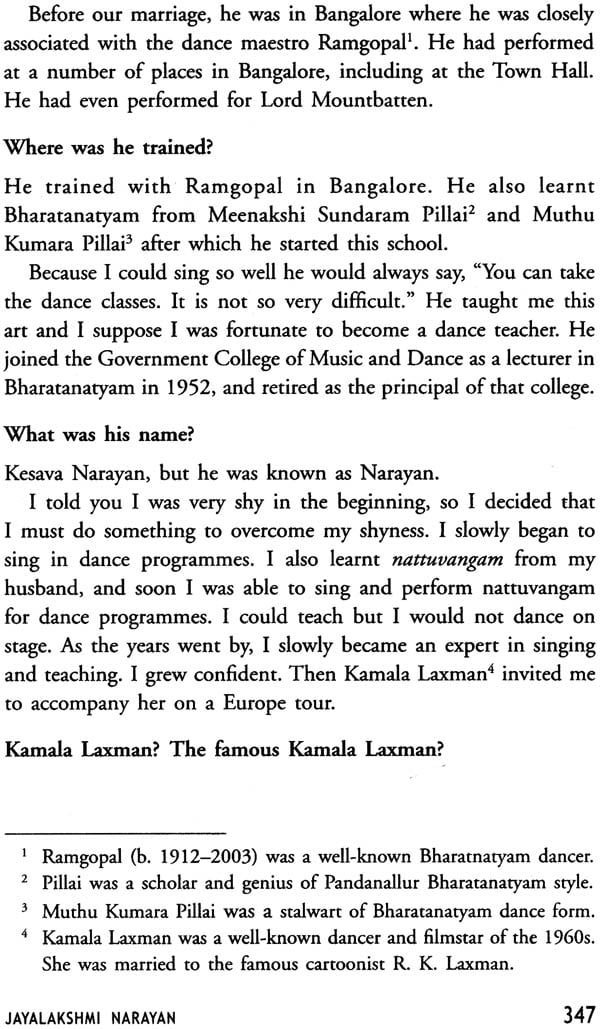
A Grief to Bury (Memories of Love, Work & Loss)
Book Specification
| Item Code: | NAG488 |
| Author: | Vasanth Kannabiran |
| Publisher: | Orient Blackswan Pvt. Ltd. |
| Language: | English |
| Edition: | 2011 |
| ISBN: | 9788125043058 |
| Pages: | 398 (12 B/W Illustrations) |
| Cover: | Hardcover |
| Other Details | 8.5 inch X 5.5 inch |
| Weight | 570 gm |
Book Description
A Grief in Bury : Memories of love, Work and Loss is a series of conversations with women about marriage and widowhood. The women speak here with frankness and candour about their often quite unconventional relationships with their husbands, and of coming to terms with the loss of a life-long partner. Despite the grief, despite an altered and often the grief, despite an altered and often fractured sense of self, each woman is determined to live a productive and creative life.
Reflecting the social history of a class of women born before independence, this volume explores how the institution of marriage shaped their lives. These are extraordinary women, who have lived rich, full lives where work has not been separated from leisure, nor has the private world of home and family been separated from the wider world of work and social commitment. As such they have redefined marriage and family, and equally the public sphere of work to make both inclusive spaces.
This collection of interviews raises important questions: Is it possible to retain your identity and hold on to your beliefs in a long marriage? What is the line that separates and insulates home and family from community and nation? How do these women breathe normally and smile graciously while coping with a shock that uproots and erases chunks of the self? What happens when a long and supportive partnership ends?
Eminent personalities, among them, Neera Desai, Meenakshi Mukherjee, Ela Bhatt, K. Saradamoni and Shanta Rameshwar Rao discuss their long partnerships of shared visions and love. Their choices, their struggles, and their indomitable will may provide answers to countless young people today. Apart from a general readership, this book will also appeal to students and scholars of sociology and gender studies.
About the Author
Vasanth Kannabiran is a feminist poet and writer. She is a founder-member of Asmita Colloective, which works on issues of women's rights.
Preface
This volume is a series of conversations with women who were widowed after a long enduring relationship, women coming to terms with loss, coming to terms with their altered, often fractured, sense of self and determined to live productive and creative lives.
In seeking to explore the intersecting dimensions of marriage, I have reflected at length on the implications, emotional and intellectual, of the loss of a husband and the end of a marriage that has lasted and sustained two people over a lifetime. My concern was to understand how women dealt initially with the fear of impending loss and then loss itself.
It is difficult to explain why I embarked on this venture. The most obvious explanation is that having been in a long sustaining relationship with the lurking fear of loss suspended like the sword of Damocles over each waking moment, this book could be an attempt to lay that fear. Given the perpetual presence of violent death in the human rights movement, the fear of loss has been a permanent guest in my household. The only solution was to set the fear aside and carry on with the business of living-day by day, hour by hour, till it has added up to a lifetime. But the habit of fear continues to stalk and haunt one's thoughts even when the danger is past.
I had often wondered at many older traditional women, devoted wives, who in spite of the religious and cultural horror of widowhood, looked fresh and tension free after their husband's deaths. I had often wondered at the transformation of women who were nervous, fussy, frenzied wives when their husbands were alive to relaxed women who blossomed forth overnight after they lost their husbands. "The worst was over!", as my sister-in-law put it succinctly, when we were delayed on the road while returning after immersing her husband's ashes. The crisis was over so there was no need to worry anymore. Suddenly there was all the time in the world! One of my aunts had said to me sadly when I met her after her husband died, "I am not the same Mythili you knew of. This is another creature who stands before you!"
Particularly, 1 had seen Lakshmi, a young middle-class housewife and mother of three, steeped in tradition, gentle, voiceless, dependant evolve into a strong independent single mother, taking on her husband's job in government after his tragic death in a road accident. She was a different person, transformed by tragedy. It was difficult to imagine that this smiling confident woman, amazing in her poise had lain curled up all those years inside the timid housewife who had welcomed me to her home and waited on me. Was this other dormant self safely sheathed in the fragile shell of marriage? Was she hatched only when her husband died? What was the difference these women spoke of? What was the basis of this sense of change? The rhetoric of widowhood and grief apart there was a marked change in the way they perceived themselves. While at a conscious level they genuinely felt halved, worthless and unlucky they had also become whole human beings-no longer just a part of a whole. From angels in the closet toiling and tending endlessly to a husband's needs, they suddenly grew aware of their own needs, hungers, diseases and pains. More importantly, they gradually discovered they had voices, opinions and preferences of their own, and began to assert them often to the amazement of the rest of the family.
As a feminist the first step to liberation was to critique the institution of marriage and its warping, stunting effect on women's personalities and intellects. The bonsai remains a metaphor for Many of us who were feminists had to work at reshaping our own marriages into something more radical and supportive of our needs and vision. And many of us grew through the years with our husbands-shaping and educating them and being shaped and transformed in the process. Negotiating compromises and ironing out contradictions; often sacrificing a "minor" principle for a "larger" goal. Agonising over the compromise and the political correctness of our decisions. Constantly honing and redefining priorities as we moved to newer pastures.
A couple of decades ago I set about this search with a simplicity and linearity that amazes me even today! I invited a group of friends and colleagues who had been widowed and hoped that their conversations and memories would coax out the reality of their relationships in a gentle stream that would then turn into a gushing waterfall of truth that washed away all illusions! The bitter truth of betrayal, violence and emotional scars that mark and mar each marriage. Predictably this failed and my attempt to coax my friends to open up was abortive. They were locked into cliches and stereotypical responses, far too trapped in convention to summon the courage to look back at the relationship honestly. I realised that my naivete coupled with my own rigid ideological assumptions was not going to bring me any answers. I also realised gradually that the capacity to articulate these issues required a sensitivity and range of experience that was our of the ordinary. I needed women who had led extraordinary lives, and had made and sustained marriages that were out of the ordinary. I started all over again. I remembered Kathy saying to me once, "A part of you just dies." I remembered Ela Bhatt telling me that one should never postpone something for later. "There is no later"; she said when I first met her after she lost her husband. Those words haunted me and were instrumental in my resuming work on this book. Setting aside pre-conceived notions I thought about the subject again. I set our to explore the way relationships worked. The negotiations, the compromises, the adjustments, the sacrifices needed to grease the family engme and keep it running smoothly. I started with a set of questions which each of the women I spoke to found meaningful. More importantly each of the women felt a deep need to talk about the relationship and the loss-a need to go back and reflect on that life. In the process of writing I have taken care to see that emotion and pathos do not distort and romanticise the rawness of lived reality.
The choice of my subjects was determined by several factors.
First, they had to be fairly well-known women in their fields to interest my readers. Second, they had to be women who knew me well enough to trust me to speak. Countless stories that came in the flow of the story have been edited out. Not that there was anything to hide, but to cut out sensationalism. Often as we speak, we say things that seem raw and brutal in cold print. We often think that is not what I meant at all. I have been aware of this danger. There is also my view that a personal issue ceases to be "personal" when it transcends the immediate local environment. The personal is the political; depression, care-giving, withdrawal and dependence are all part of our life. And every experience shared helps us to cope with our problems, teaches us to survive. Third, my interest was in tapping the memories of women who had strong and affirming relationships that contributed to their growth.
A couple of them knew of me, but spoke willingly on the strength of the references I carried. Three of the women are recognised and published writers, two of them have won Sahitya Akademi Awards for their work, three are recognised Women's Studies scholars, sociologists and economists, whose works in the area of women's studies is path-breaking, three of the women are development and human rights activists, one is a home-maker chosen for the strength and dignity of her choices, and one a dance teacher, who set up an academy and travelled across the world, singing in dance performances. The limitations of this effort are self-evident. They are all well-educated women of a particular class. Yet, these interviews provide a sense of the change that women's education and Independence had wrought in the institution of the family and marriage. They draw out the sense of. hope and the visions of the women interviewed. Jayalakshmi Narayan broken by the shock of her husband's sudden death was barely able to speak. She lived for a few months after his first death anniversary and died leaving me no opportunity to probe further. I am grateful to her children who provided me with the details to fill in the gaps. Then we lost Neera Desai and Meenakshi Mukherjee. Neera had warned me not to make it a posthumous volume. Meenakshi's sudden death was heartrending. I cannot but regret the fact that it is. The rest are also frail and I hope this book will come out when they can enjoy it.
The women I spoke to are Neera Desai, Ela Bhatt, K. Saradamoni, Kathy Sreedhar, Shanta Rameshwar Rao, Abburi Chaya Devi, Meenakshi Mukherjee, Koely Roy, Rameswari Varma, Sutapa Chakrabarry, Rukmini Parthasarathy and Jayalakshmi Narayan.
Most of these marriages reflect the social history of a class of women in the last century. All of them were born before Independence. This is an attempt to see how the institution of marriage has shaped the lives of these women. This is not to deny that there are other enduring partnerships that are rich and deep. My limited brief and therefore a limitation of this work is that it focusses on marriage and loss. Often when we speak of our lives even, as we reflect we edit both unconsciously and deliberately. This is the story the women chose to tell. The unspoken parts remain silent between the lines. The fact that all the women agreed willingly and eagerly, that they gave me their precious time and trust is evidence of how important it is for us to share, to speak of this loss. All of them had friends, supportive children, colleagues but the opportunity to revisit, reflect, question and analyse long forgotten days and desires that were deeply personal with a woman you could speak to was evidently important.
Contents
| Preface | ix | |
| Acknowledgements | xxvii | |
| Choosing the Rugged Path: Charting the Political economy of Gender | ||
| 1 | NEERA DESAI | 3 |
| 2 | K. SARADAMONI | 41 |
| 3 | RAMESWARI VARMA | 77 |
| Made for each Other: Welding Human Rights into Development | ||
| 4 | KATHY SREEDHAR | 99 |
| 5 | KOELY ROY | 125 |
| 6 | ELA BHATT | 167 |
| Portraits of Marriage: Wielding Pens, Forging Wisdoms | ||
| 7 | SHANTA RAMESHWAR RAO | 203 |
| 8 | MEENAKSHI MUKHERJEE | 233 |
| 9 | ABBURI CHAYA DEVI | 277 |
| Home and the World: 'The Walls of Freedom | ||
| 10 | SUTAPA CHAKRABARTY | 297 |
| 11 | RUKMINI PARTHASARATHY | 327 |
| 12 | JAYALAKSHMI NARAYAN | 345 |
| Epilogue: Half a Century With Kannabiran | 357 |

